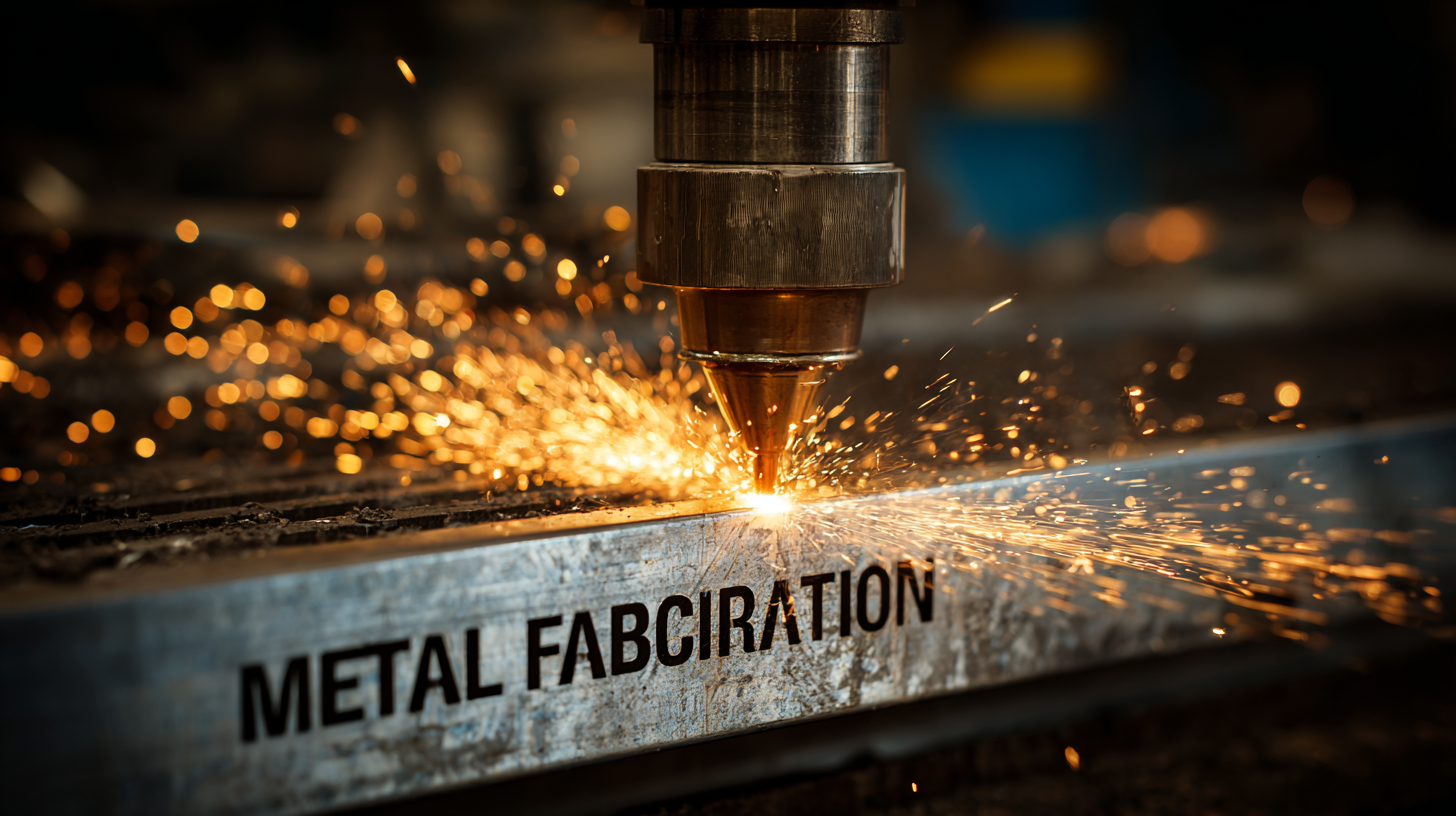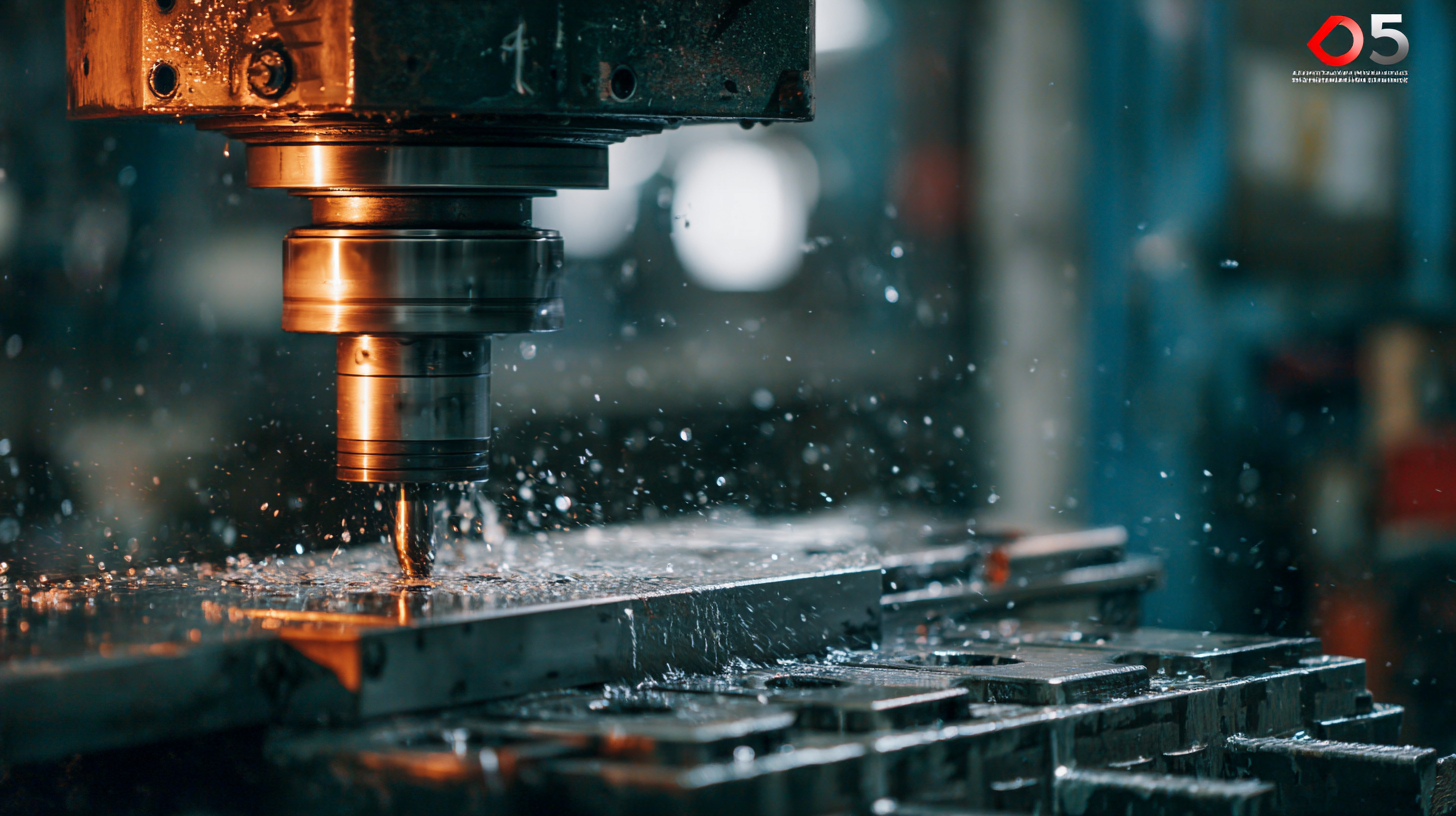In today's fast-paced manufacturing landscape, optimizing efficiency is paramount for staying competitive. According to a recent industry report by the Fabricators & Manufacturers Association, companies that leverage advanced metal fabrication techniques can enhance their operational efficiency by up to 30 percent. This significant improvement stems from the ability to minimize waste, reduce production time, and improve product quality, all of which are crucial factors in the manufacturing process. Metal fabrication not only streamlines the production workflow but also allows manufacturers to respond swiftly to market demands and customization requests. As the manufacturing sector evolves, investing in the best metal fabrication solutions is no longer just an option; it’s a strategic imperative for businesses aiming to thrive in an increasingly demanding environment.

Precision in metal fabrication plays a pivotal role in driving manufacturing efficiency, with recent industry reports indicating that precise fabrication can boost operational performance by as much as 30%. According to the "2023 Manufacturing Efficiency Report" by the National Association of Manufacturers, companies that prioritize precision in their processes see significant reductions in material waste and errors, leading to a streamlined production cycle. This increased accuracy not only enhances product quality but also minimizes rework, allowing manufacturers to utilize resources more effectively, ultimately reducing costs.
Moreover, advances in technology, such as laser cutting and CNC machining, have facilitated higher precision levels in metal fabrication. A report from the Fabricators and Manufacturers Association found that businesses employing high-precision equipment can reduce cycle times by nearly 25%. Such improvements are crucial in an era where competitive advantage hinges on both speed and quality. By investing in precision metal fabrication techniques, manufacturers can significantly enhance their output efficiency while maintaining high standards that meet market demands.

Innovative techniques in metal fabrication are reshaping the landscape of manufacturing efficiency. By utilizing advanced technologies such as laser cutting and 3D printing, manufacturers can significantly streamline production processes. For instance, laser cutting not only reduces the time needed to shape metal components but also enhances precision, minimizing waste and the need for rework. This precision translates to quicker turnaround times and a more efficient use of resources, which are crucial in today’s fast-paced manufacturing environment.

Additionally, automation in metal fabrication, particularly through robotics, is playing a pivotal role in increasing efficiency. Automated systems can handle repetitive tasks with consistent accuracy, freeing up human workers for more complex, value-added activities. The integration of real-time monitoring and analytics enables manufacturers to identify bottlenecks in production and optimize workflows accordingly. As these innovative techniques continue to evolve, they promise to deliver substantial improvements in efficiency, allowing companies to keep pace with demand and maintain a competitive edge in the market.
Quality control is paramount in the manufacturing sector, particularly in metal fabrication, where precision and reliability can significantly influence overall output. According to a report by the American Society for Quality (ASQ), businesses that implemented robust quality control measures saw an increase in their manufacturing efficiency by up to 30%. This efficiency is crucial for meeting market demands without compromising on product standards. In the context of metal fabrication, where deviations can lead to costly defects, maintaining stringent quality oversight ensures that each component meets the necessary specifications, thus reducing rework and waste.
Moreover, a study published in the Journal of Manufacturing Science and Engineering highlighted that companies investing in quality control technologies experienced up to a 25% reduction in production cycle times. By minimizing errors and enhancing operational workflows, these companies not only improve their output but also enhance customer satisfaction through reliable delivery of high-quality products. In an industry where every second counts, such improvements can mean the difference between gaining a competitive edge and falling behind in a fast-paced market.
Collaboration between industries is crucial in elevating metal fabrication standards, ultimately boosting manufacturing efficiency. By fostering open communication and shared resources among manufacturers, engineers, and designers, companies can optimize their processes and innovate better materials and techniques. This cooperative approach not only enhances the quality of fabricated products but also leads to significant cost savings and reduced lead times.
Tip: Regularly scheduled workshops or joint ventures between different stakeholders can facilitate the exchange of ideas and best practices, allowing for a richer dialogue on how to overcome common challenges in metal fabrication.
Furthermore, cross-industry partnerships allow companies to stay at the forefront of technological advancements. By integrating insights from related fields, such as automation and advanced materials, metal fabricators can implement state-of-the-art processes that improve their efficiency. These collaborations can lead to groundbreaking methods and materials that set new standards within the industry.
Tip: Encourage your team to participate in industry conferences and networking events to build relationships that can lead to fruitful collaborations and improvements in fabrication standards.
Sustainability in metal fabrication has emerged as a crucial driver of operational efficiency in the manufacturing sector. By adopting eco-friendly practices, companies not only reduce their carbon footprint but also optimize resource usage, leading to significant cost savings. For instance, using recycled materials reduces waste and the need for raw material extraction, which can be resource-intensive. This shift not only honors environmental commitments but also aligns with modern consumer expectations for sustainable production methods.
Moreover, investing in sustainable technologies, such as energy-efficient machinery and cleaner production techniques, enhances overall productivity. These advancements often lead to a decrease in energy consumption and emissions, which translates into lower operational costs. Additionally, a sustainable approach can streamline processes by integrating circular economy principles, allowing manufacturers to maximize the lifecycle value of their products. Consequently, incorporating sustainability into metal fabrication practices is not just an ethical obligation; it is a strategic move that can elevate a company's efficiency and competitiveness in the crowded manufacturing market.
| Key Reasons | Impact on Efficiency (%) | Sustainability Measures | Cost Savings ($) |
|---|---|---|---|
| Advanced Machinery | 10 | Energy-efficient equipment | 15000 |
| Customized Services | 8 | Waste reduction strategies | 10000 |
| Process Automation | 5 | Reduced manual labor | 12000 |
| Efficient Supply Chain | 4 | Recycled materials | 8000 |
| Employee Training | 3 | Sustainable practices education | 5000 |
